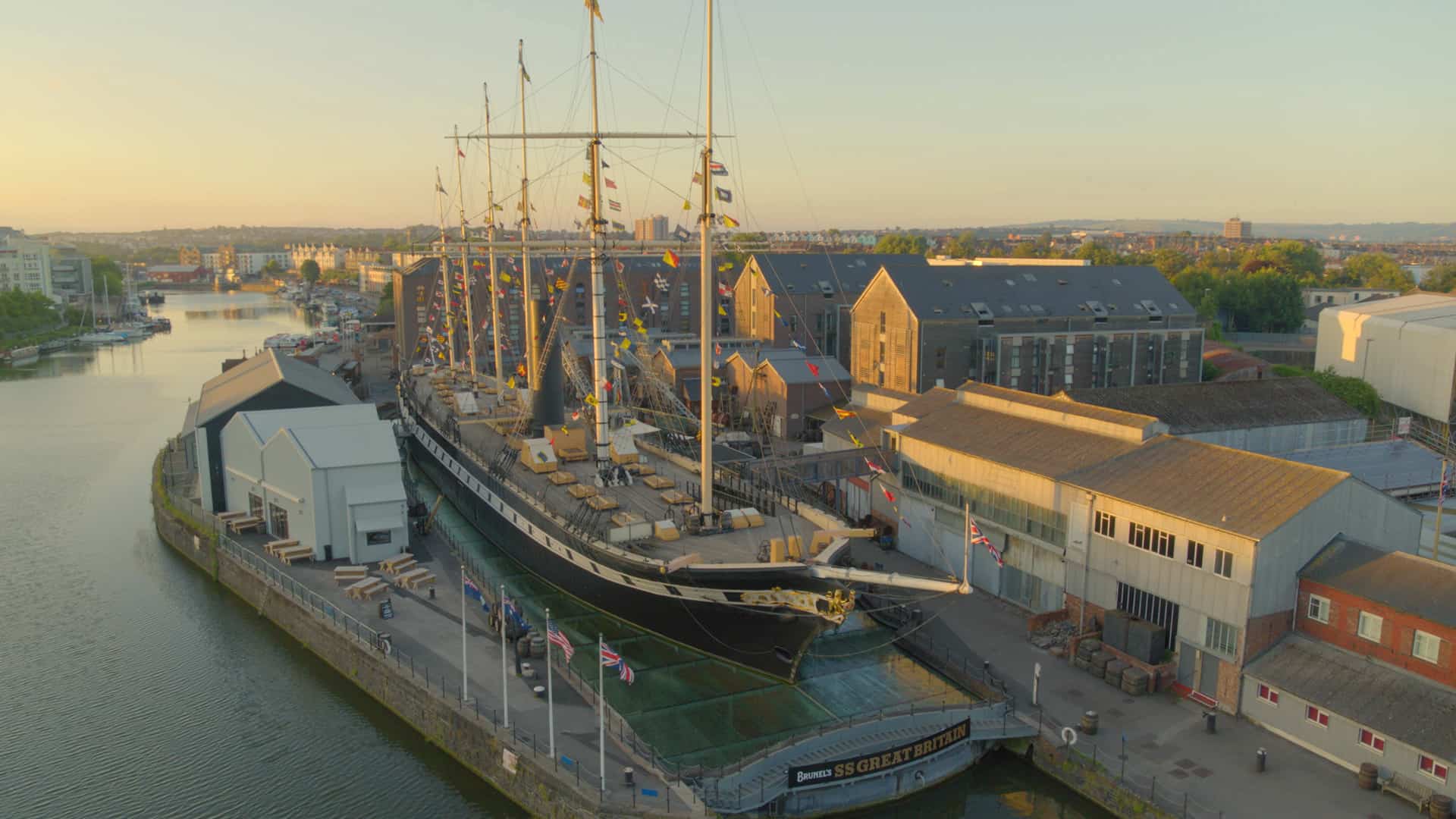2020: 175th anniversary of the SS Great Britain arriving in New York City
7 August 2020 was the 175th anniversary of the SS Great Britain arriving in New York City, becoming the largest and most-efficient ship at the time, and being greeted by crowds of New Yorkers.
The SS Great Britain’s arrival into New York harbour was a vision of the future: propeller driven, ocean-going ships with metal hulls which soon transformed transatlantic migration. The new era of ships – that the SS Great Britain had provided the prototype for – replaced wooden sailing vessels, often operating as notorious ‘coffin’ ships, and heralded a new era in mass emigration, shaping American history along the way.
The SS Great Britain is now back home in Bristol as part of the city’s top-rated visitor attraction. The museum has won more than 50 awards, including ‘Europe’s Most Welcoming Museum’ in the European Museum of the Year Awards 2019.
From Dr James Boyd, Brunel History Fellow, SS Great Britain Trust
175 years ago, a revolutionary vessel arrived in New York harbour. The SS Great Britain, built in ‘that ancient port’ of Bristol, in England’s West Country, arrived on the American coast for the first time. The ship was a vision of the future. Its builder, Isambard Kingdom Brunel, was part of the Bristol group that had constructed the first ever purpose-built steam vessel to cross the Atlantic, the Great Western, in 1838. That ship, built from wood, with traditional paddle wheels at its sides, proved that engined vessels could cross the Atlantic to New York without difficulty.
The new steam ship, made of iron, was the first ever deep-sea vessel with a metal hull, and the first to use a propeller to move through the water. It was the prototype of the modern ship, arriving in 1845 just as masses of wooden coffin ships, exploiting crisis-driven migrants from Europe, began to reach their peak in American ports. Sceptical at first (the Great Britain carried only first-class custom) within 10 years, the emigration services across Europe began to transition to the new idea. As they did so, sanitation, space, and the potential to cross to the New World entered a new era. A ‘race to the top’ for standards and custom on these new ships revolutionised the emigration story to America. More people on faster, safer crossings allowed the flow of people from Old World to New to explode.
Incredibly, 175 years after showing the future to New York crowds, the SS Great Britain still exists today. A testament to engineering ingenuity, 50 years ago it was rescued, as a broken hulk, from the Falkland Islands. Towed back to Bristol, restored, and standing in the dry dock where it was constructed, the ship endures today, a revolutionary maritime advance that changed the world in which we live.
Spectacle of the SS Great Britain arriving in New York, 7 August 1845
Once the SS Great Britain had docked in New York (South Street), 21,000 people boarded the ship paying 25 cents each. Many paid an extra 12 ½ cents to see the engine room. Part of the proceeds were given to the Fire Department and organisations caring for the blind, deaf and dumb. 19 days after arriving in New York, the SS Great Britain departed, after Captain Hosken and the officers had given a dinner for the merchants of the city.
The New York Herald reported (on 11 August):
“…All that has been said of her in foreign journals have not done her justice and nothing but the evidence of the senses is adequate thereto. She is truly beautiful; her vast length was strikingly exhibited in contrast of that of the North Carolina…her decks seemed a miniature city… Of course the crowd was immense… …the foremast a blended flag of England and America, the Stars of this country blending with the blue, white and red of the Union of England and at the lower quartering the stripes.”
The SS Great Britain’s first passengers
There were only 46 passengers aboard the SS Great Britain’s maiden voyage. Many would have been officials, perhaps connected with the Great Western Steamship Company, or pioneers eager (and brave enough) to travel on what had been described as “the greatest experiment since the creation.” Brunel would have been at the peak of his career in 1845, and the first voyage of his innovative ship would have garnered much attention and some trepidation. Among those first passengers was a British surveyor and geographer, Colonel Sir George Everest, who travelled when he was 55 years old after having served as Surveyor General of India from 1830 to 1843. George Everest later had Mount Everest – the highest mountain in the world – named in his honour.



